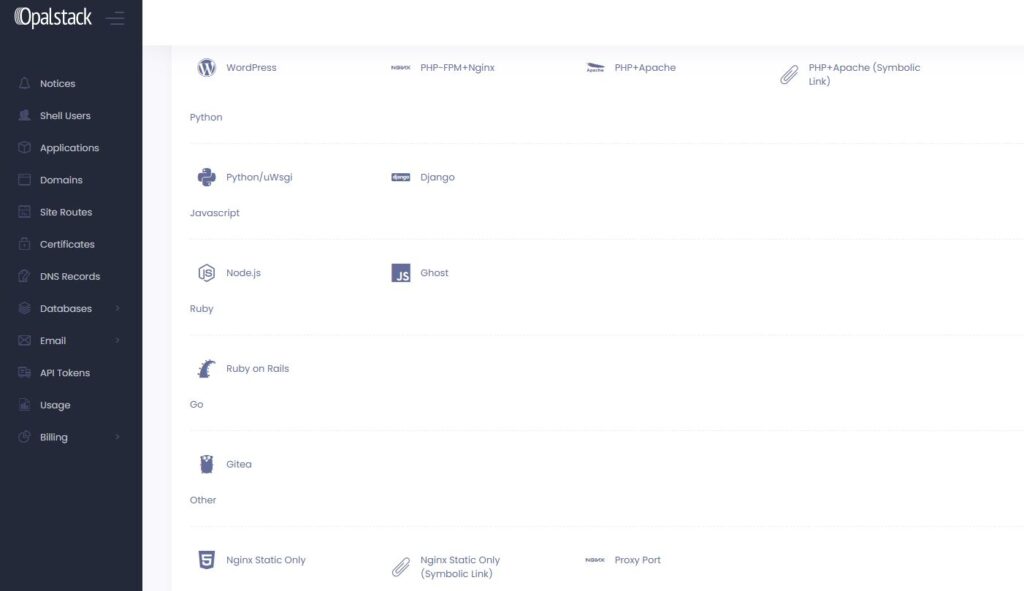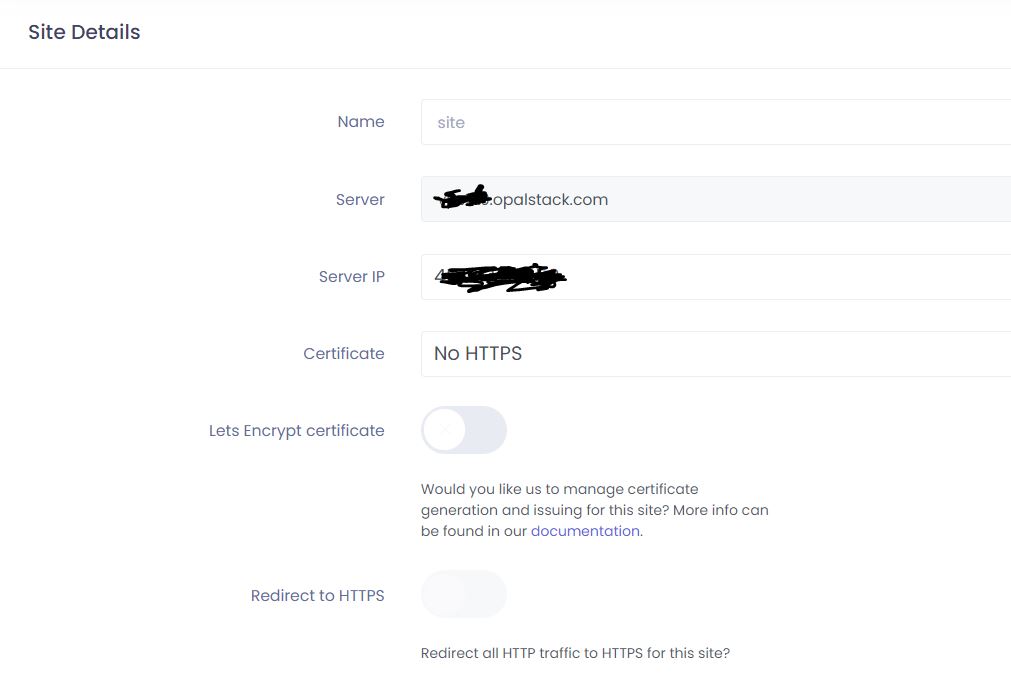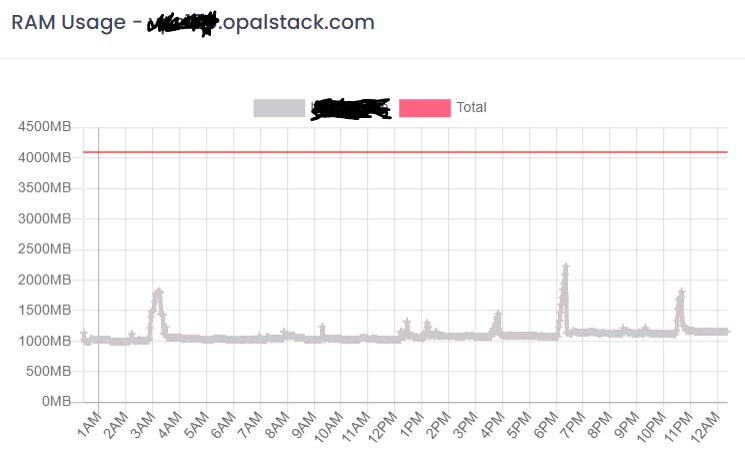If you’re like me, your head is probably still spinning over the email from GoDaddy earlier this year. I spent most of the past decade as a Webfaction customer, happy to have found a python friendly hosting provider who supported oddball features. GoDaddy is turning that off (for us, at least) later this month. The good news is… OpalStack can easily fill their shoes.
To help you transition to a new webhost, we’re going to profile some of the key features which prompted me to move our websites over to Opalstack. While this is an Opalstack review, we were sold on moving once we learned who was behind Opalstack: Webfaction’s former customer support team.
In short – we’re getting back the hosting platform that we came to know and love a few years ago, run by the same people, and updated with a bunch of features and options that GoDaddy refused to invest in after the acquisition. (disclosure – some links in this article are affiliate links: Opalstack Signup.)
OpalStack Review – Key Capabilities (Webfaction 2.0)
So – why Opalstack? What sets them apart from other webhosts?
In answering that question, I’m going to address two separate audiences. The first group is Python (and now – Ruby and node.js / Ghost) developers who would prefer to focus on coding vs. system administration. Opalstack provides a developer-friendly and reliable environment to host projects. More details on that in a moment. This is Opalstack’s traditional audience.
That being said, it turns out that Opalstack is also a solid place to host PHP and WordPress sites. While there are many WordPress hosting providers out there (everything from buck-a-month shared hosting to fancy platinum plated support plans at WPEngine), Opalstack has a bunch of free features (such as automated LetsEncrypt certificates) that can save a lot of money if you’re managing a fleet of side projects (PHP, static sites, WordPress blogs). Because seriously – it is 2020 – your site needs to support HTTPS…
Back to the Python friendly developer faction. Opalstack’s current offering includes some familiar features for a Webfaction user:
- shared hosting for Python
- free SSL certificates via Lets Encrypt,
- custom app ports (eg. build what you like, run as a server process, expose a port, and they handle things from there behind nginx)
- tech support that’s familiar with Python servers
- Django
- WordPress (for basic blogs & marketing materials)
With a few improvements such as support for a broader set of open source frameworks:
- node.js
- ruby
- ghost
- Gitea
- PHP-FPM+nginx (faster and better than the Apache setup)
- other python web server variants (uWsgi)
Here’s a view of their current set of supported applications:

The support for proxy port applications opens up even more options. You’ve got a full Linux server behind the scenes (for the VPS plans). If you can find a way to set up your app in that environment, just open a port and assign it to a routing path for the website. While I haven’t personally tested this, that should give you a way to host more exotic stuff like Lisp web applications or Haskell web frameworks (along with other Python web frameworks).
Note also the customized support for Django and Python/Uwsgi. Opalstack remains a strong Python web hosting shop in terms of support expertise.
You can connect to the back end via SSL and FTP; that provides you with a way to configure server-side operations and quickly move code & content onto the server. Opalstack manages the frontend (nginx) and database server configuration (Maria & PostGres), reducing your support workload.
Their feature list includes good support for static files and blogging platforms, including the ability to serve them directly through nginx, freeing up resources for your website. From a database perspective, they offer Postgres and Maria (mysql database variant). You can set this up as shared hosting, a managed vps (virtual private server), or a dedicated managed server (at a higher cost).
Site Configuration is handled through the interface below. You’re able to assign routes to specific applications, enabling you to easily construct a website from multiple technologies (for example, a Django web app and a WordPress marketing blog). You have the ability to set up (and automate) provisioning of a LetsEncrypt SSL certificate at no charge.

The support team is excellent, easily competitive with the webfaction server support of old. You know, people who know what redis is, who can troubleshoot your django app, use git, know their way around a docker container, etc. The usual stuff you expect from developer friendly web hosting.
One nice feature, that wasn’t on Webfaction. They track system usage and provide you with a handy graph to help keep an eye on performance…

The overall interface is a bit nicer (they cleaned up a few things) and pricing is still competitive. You can handle most application setup through a web based console and there is ssh access for custom applications.
As of this writing, you can get an annual web host plan for about $100 (and buffed up servers for $200 – $400). They offer a 14 day free trial for a basic plan, which starts at $9.50 per month. Click here to sign up for a trial plan.
Second Option – Python Anywhere
Another player in the python hosting space, PythonAnywhere, built their program around the idea of offering a Python IDE in the browser. If you’re a fan of using IPython / Jupyter notebooks to manage your code, they’re a great option.
PythonAnywhere has the best free python hosting offer out there. (eg. legitimate free python hosting that isn’t utterly crippled to harass you into upgrading).
Their paid plans are decent as well. They’ve got two basic entry level plans at $5 – $12 per month. Business class hosting starts at $99 per month, with the resources to run three web apps at scale (1 MM hits per day).
Click here to get started with their program.
We actually ended up using Opalstack as our primary web hosting platform (after Webfaction, granted this is an Opalstack review). They’ve got better integration with non-Python applications such as WordPress and static hosting platforms. The free SSL certificates are helpful as well. But either way, here are two good options to help you move forward…